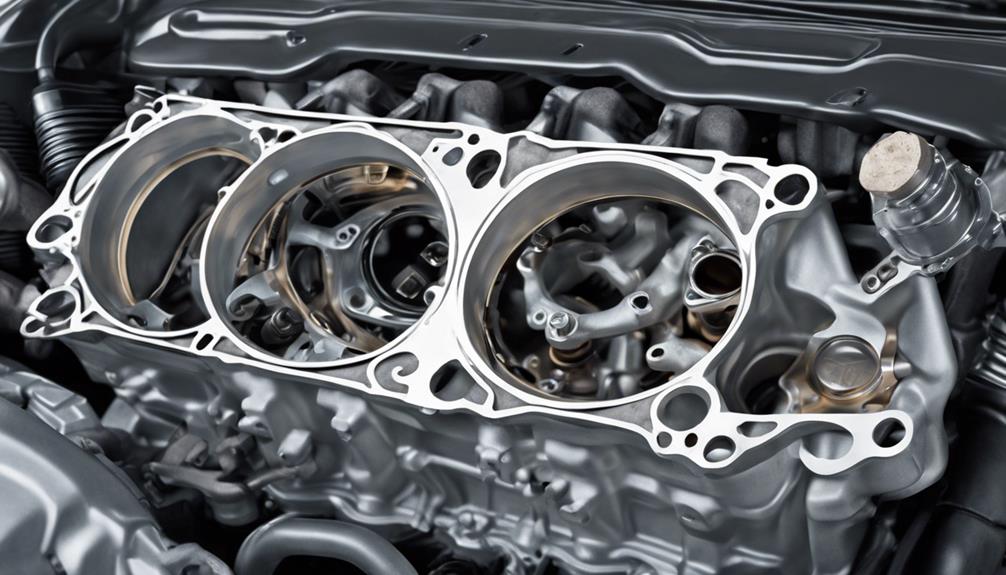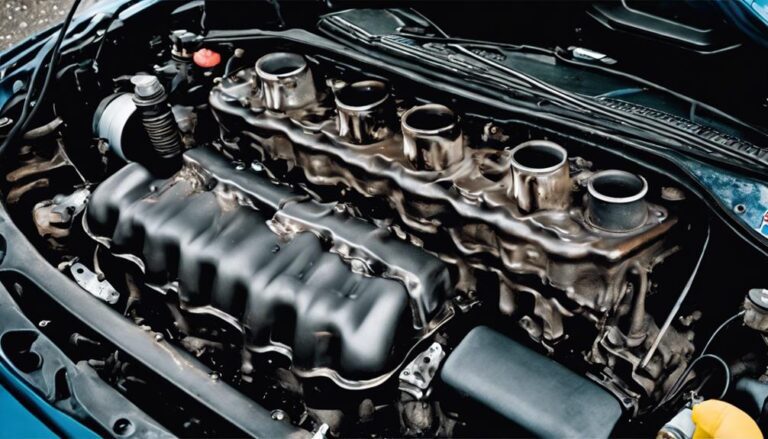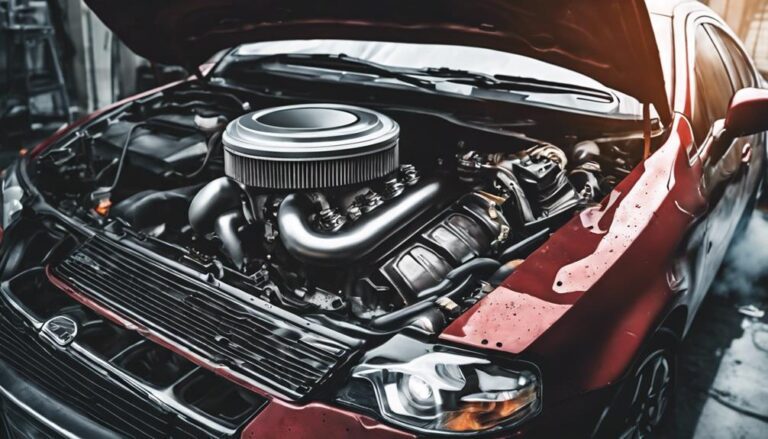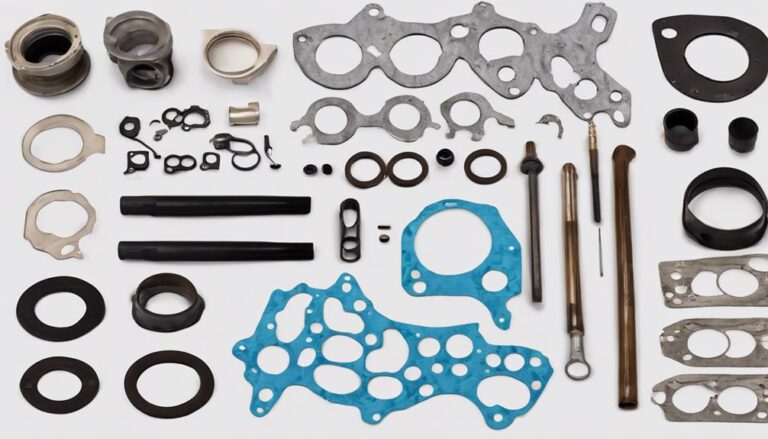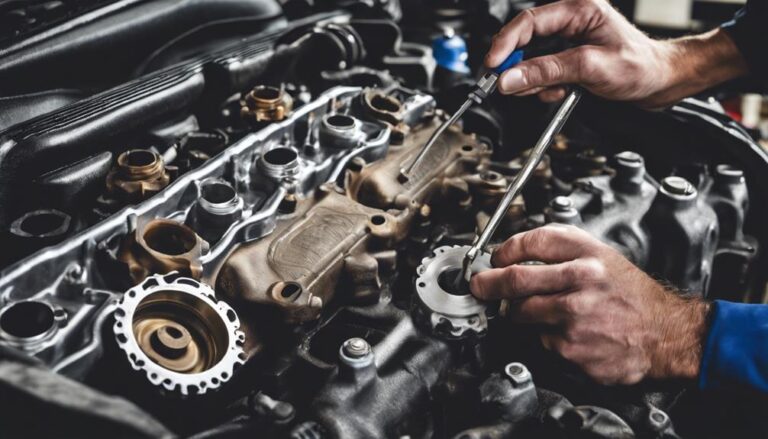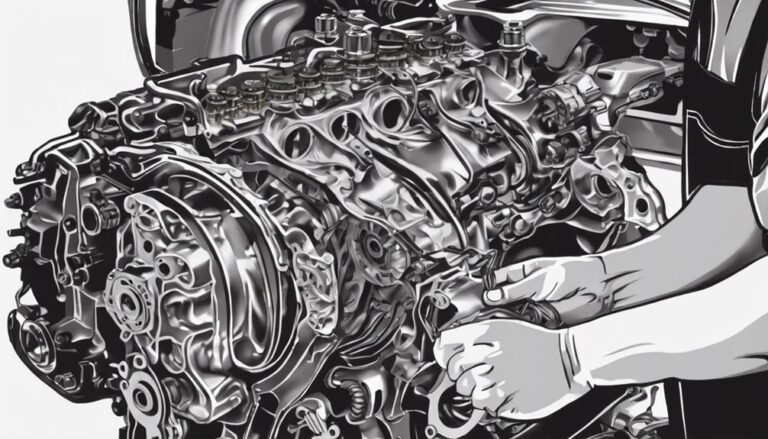Head Gasket Vs Valve Cover Gasket: Key Differences
Imagine the intricate inner workings of an engine, where metal meets metal in a symphony of controlled combustion.
Now, picture two important components nestled within this mechanical orchestra – the head gasket and the valve cover gasket.
While they may seem similar at first glance, their roles and characteristics diverge greatly. Understanding these disparities could save you from costly repairs and engine damage.
Key Takeaways
- Head gasket seals combustion gases, while valve cover gasket prevents oil leaks.
- Head gasket is between engine block and cylinder head; valve cover gasket is atop cylinder head.
- Head gasket repair is complex and costly compared to valve cover gasket replacement.
- Timely gasket replacements crucial for engine health, performance, and cost-effectiveness.
Material Composition Variances

When comparing the head gasket and valve cover gasket, one key difference lies in their material compositions. The head gasket is typically made of materials like multi-layered steel, copper, or composite materials. These materials are chosen for their excellent heat resistance capabilities, allowing the head gasket to withstand the high temperatures and pressures present in the engine combustion chamber.
On the other hand, the valve cover gasket is commonly crafted from materials such as rubber, cork, silicone, or molded rubber with steel cores. These materials offer good resistance to oil and fluid exposure but may not have the same level of heat resistance as those used in head gaskets.
Due to the different compositions, the head gasket excels in sealing combustion gases and preventing leaks in the engine block, while the valve cover gasket effectively seals the valve cover to prevent oil leaks. Understanding these composition variances is important for ensuring best performance and longevity of your vehicle's engine components.
Location and Function Dissimilarities
The location and function dissimilarities between the head gasket and valve cover gasket are essential in understanding their distinct roles in engine operation.
The head gasket is situated between the engine block and cylinder head, sealing the combustion chamber and maintaining compression within the cylinders. Its primary gasket purpose is to prevent coolant, oil, and exhaust gases from mixing and leaking into areas where they shouldn't be, ensuring excellent engine performance.
On the other hand, the valve cover gasket is positioned atop the cylinder head, sealing the valve cover to prevent oil leaks. Its gasket purpose is to maintain a tight seal that keeps oil from escaping the valve train components.
While the head gasket often requires sealant application due to the high pressures and temperatures it faces, the valve cover gasket generally doesn't necessitate sealant due to its lower exposure to extreme conditions. Understanding these location and function differences is essential for proper maintenance and operation of the engine.
Repair Costs Comparison
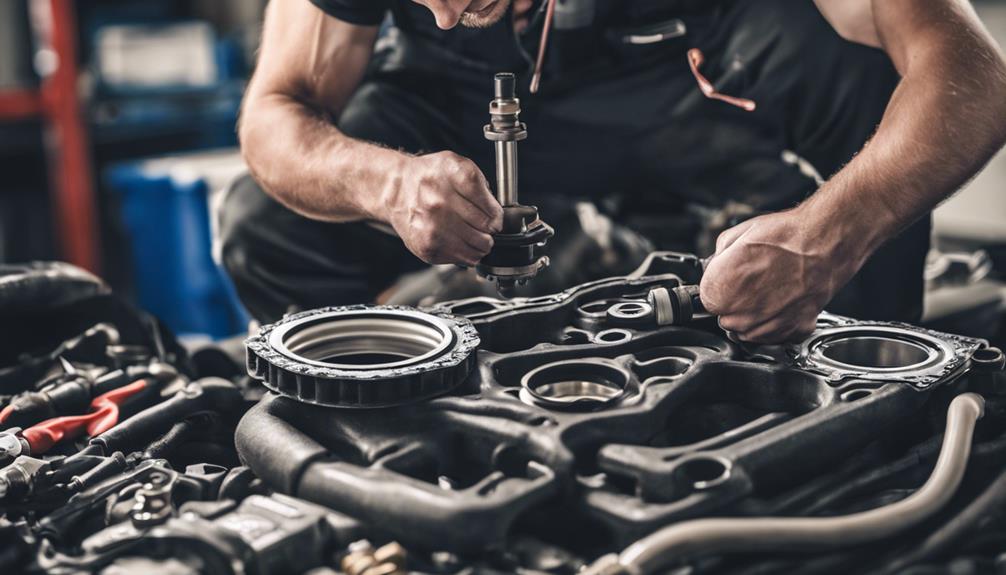
Repair costs for head gasket replacement typically exceed those for valve cover gasket replacement due to the complexity and critical function of the head gasket within the engine system. The cost analysis involves not only the price of the gasket itself but also labor expenses.
Head gasket replacement demands more intricate work as it's situated between the engine block and cylinder head, requiring substantial disassembly of engine components. On average, the cost of head gasket replacement can range from $1200 to $2000, while valve cover gasket replacement usually falls between $200 to $500.
To minimize repair costs, regular maintenance is key. Ensuring proper cooling system function, using the right coolant, and promptly addressing overheating issues can prolong the life of gaskets. Additionally, following manufacturer-recommended service intervals and promptly addressing any signs of gasket failure can help prevent more extensive damage, reducing overall repair expenses.
Regular maintenance and prompt attention to gasket issues can significantly impact long-term repair costs.
Symptoms of Failure Contrast
To distinguish between a failing head gasket and a failing valve cover gasket, pay careful attention to specific symptoms that signal their respective issues. When dealing with these critical components of your engine, it is essential to be able to differentiate between the symptoms they exhibit. Here is a comparison of the key symptoms associated with a failing head gasket versus a failing valve cover gasket:
| Failing Head Gasket | Failing Valve Cover Gasket |
|---|---|
| Overheating issues | Oil leaks onto the spark plugs |
| White smoke from the exhaust | Burning oil smell |
| Milky substance on the oil cap | Visible oil leaks around the valve cover |
Detecting leaks and understanding the potential engine damage can help you address the issue promptly and prevent further complications. By recognizing these symptoms, you can take appropriate action to make sure the health and longevity of your vehicle's engine.
Importance of Timely Replacement
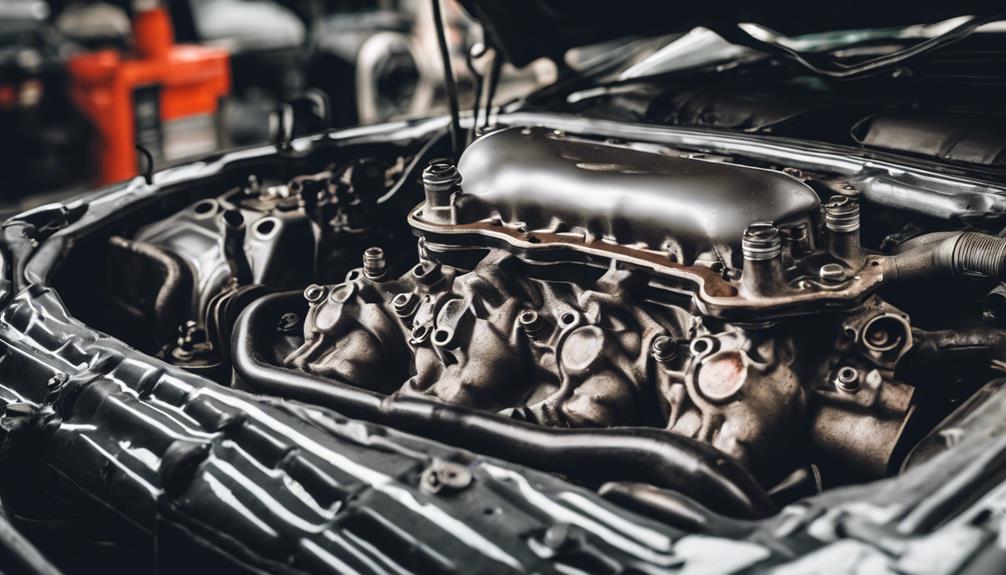
Timely replacement of either the head gasket or the valve cover gasket is important to prevent significant engine damage and maintain peak performance. Neglecting these components can lead to oil or coolant leaks, which can contaminate the engine bay and potentially cause overheating or loss of lubrication. Here are three key reasons why timely replacement is vital:
- Preventing leaks: Both the head gasket and the valve cover gasket play crucial roles in sealing engine components. A worn-out gasket can result in leaks that not only affect the engine's performance but can also pose safety hazards due to slippery fluids on the road.
- Ensuring engine performance: A faulty gasket can lead to decreased engine efficiency, affecting fuel economy and overall power output. By replacing the gaskets on time, you can maintain optimal engine performance and responsiveness.
- Extending lifespan, Avoiding costly repairs: Regularly replacing these gaskets as part of your maintenance routine can extend the lifespan of your engine and prevent the need for more extensive and expensive repairs down the line. Investing in timely replacements now can save you from significant costs in the future.
Frequently Asked Questions
Can a Faulty Valve Cover Gasket Cause Damage to the Head Gasket?
If a faulty valve cover gasket goes unrepaired, it can lead to oil leaks, potentially causing engine overheating due to oil loss. This can create conditions that may indirectly affect the head gasket, resulting in more extensive repairs and higher costs.
Are There Any DIY Methods for Temporarily Fixing a Leaking Valve Cover Gasket?
If you're looking for a quick fix to temporarily repair a leaking valve cover gasket, consider using high-temperature silicone sealant or gasket maker. These DIY methods can provide alternatives until a proper replacement can be done.
How Often Should the Head Gasket and Valve Cover Gasket Be Inspected for Wear and Tear?
Regularly inspecting your head and valve cover gaskets is essential for maintaining engine health. Routine maintenance includes gasket inspection to prevent leaks. Replace worn gaskets promptly to avoid damage. Keeping up with this maintenance will guarantee your engine runs smoothly.
Are There Any Preventative Measures That Can Be Taken to Prolong the Lifespan of Both Gaskets?
To prolong the lifespan of both gaskets, regular gasket maintenance is key. Preventative measures include using high-quality gasket materials, avoiding overheating, maintaining proper engine temperature, and ensuring correct torque during installation.
What Are the Potential Long-Term Consequences of Ignoring a Leaking Head Gasket or Valve Cover Gasket?
Neglecting a leaking head gasket or valve cover gasket can lead to severe engine damage. Ignoring maintenance tips may result in costly repairs. Make sure timely checks and repairs to prevent long-term consequences that could impact your vehicle's performance and longevity.
Conclusion
So, in summary, while the differences between a head gasket and a valve cover gasket may seem subtle to the untrained eye, their significance can't be overstated. Remember, overlooking the distinction between these two vital components could lead to costly repairs and engine damage.
So next time you're dealing with a gasket issue, make sure you know which one you're dealing with – the consequences could be quite ironic.

